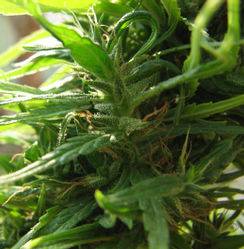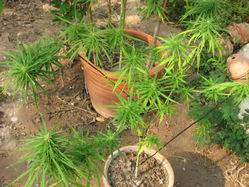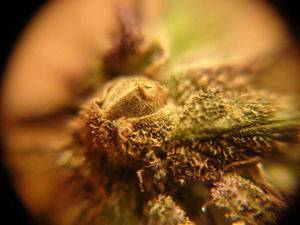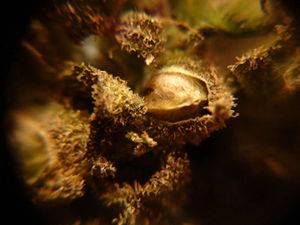-
ICMag with help from Landrace Warden and The Vault is running a NEW contest in November! You can check it here. Prizes are seeds & forum premium access. Come join in!
You are using an out of date browser. It may not display this or other websites correctly.
You should upgrade or use an alternative browser.
You should upgrade or use an alternative browser.
Thailand Outdoor
- Thread starter ThaiPhoon
- Start date
Ah well, looks like I'll have to settle for the Cambodian/Lao brick then. I have some seeds from Cambodian bud here...I will eventually get around to growing them out. I've been smoking nothing but my pure Indian sativa for a year now! It's great to be totally self-sufficient 
I have a gift for finding bud, so hopefully I'll be able to locate some good smoke while I'm there. Any pointers would definitely be appreciated
I have a gift for finding bud, so hopefully I'll be able to locate some good smoke while I'm there. Any pointers would definitely be appreciated
heya Glock23
how much time do you have?
I suggest you buy/hire a bike and check out rural Thailand - if you are a free man and single I suggest you spend a week or so hunting down a nice girl from Issan, and spend a few weeks with her (or them hehehe) checking out the countryside ... you will see so much more authentic Thai life: if you like South Indian food, you will love the food in Issan ... and they have some pretty far out dance music too -
I don't know the area too well myself, but I have good friends from there, and hung out with a lot of Issan Thais when I was in Taiwan too
it is poor in Issan, but the people have a great attitude - and there is a good chance you will be able to locate some classy ganja still
Chiang Mai is also a good place for quality grass, and has a chilled ex-pat scene ... a lot of the young guys from the hilltribe villages thereabouts are very into their drugs and bikes etc. too
as a general note on hanging out in the poorer parts of rural Thailand - people are generally very cool and mellow, friendly, generous and funny etc.
but things can turn ugly fast in SE Asia
esp. when the drink starts flowing be on your guard, as that is generally when things can turn ugly fast - esp. if there is yaba about in that part of town - it doesn't matter if it's a Buddhist festival at the wat etc. ... I have seen such events turn into ugly street brawls at the drop of a hat
anyhoo - that is sounding a bit too dark, as I fucking love Thailand
I recommend getting to know a nice party girl from the country and buying a motorbike as the best and quickest route to getting to see "the real Thailand"
cheers,
Namkha
how much time do you have?
I suggest you buy/hire a bike and check out rural Thailand - if you are a free man and single I suggest you spend a week or so hunting down a nice girl from Issan, and spend a few weeks with her (or them hehehe) checking out the countryside ... you will see so much more authentic Thai life: if you like South Indian food, you will love the food in Issan ... and they have some pretty far out dance music too -
I don't know the area too well myself, but I have good friends from there, and hung out with a lot of Issan Thais when I was in Taiwan too
it is poor in Issan, but the people have a great attitude - and there is a good chance you will be able to locate some classy ganja still
Chiang Mai is also a good place for quality grass, and has a chilled ex-pat scene ... a lot of the young guys from the hilltribe villages thereabouts are very into their drugs and bikes etc. too
as a general note on hanging out in the poorer parts of rural Thailand - people are generally very cool and mellow, friendly, generous and funny etc.
but things can turn ugly fast in SE Asia
esp. when the drink starts flowing be on your guard, as that is generally when things can turn ugly fast - esp. if there is yaba about in that part of town - it doesn't matter if it's a Buddhist festival at the wat etc. ... I have seen such events turn into ugly street brawls at the drop of a hat
anyhoo - that is sounding a bit too dark, as I fucking love Thailand
I recommend getting to know a nice party girl from the country and buying a motorbike as the best and quickest route to getting to see "the real Thailand"
cheers,
Namkha
Last edited:
I'd love to do that, but I won't have time unfortunately. All I can do is hope for the best and keep my knife in my waistband  Do you know of any ranges in Thailand?
Do you know of any ranges in Thailand?
Hopefully I'll be able to locate some acceptable grass. I'll talk to hippies out there...too scared to talk to Thais about pot after all the stuff I've been reading.
Hopefully I'll be able to locate some acceptable grass. I'll talk to hippies out there...too scared to talk to Thais about pot after all the stuff I've been reading.
Last edited:
lol - that's it - swashbuckling stylee
ranges? you mean mountain ranges? I would check out Mae Hong Son, and the North West ... more hills, than mountains mind
there are a few hill regions in Issan, but it is mostly very flat - the same applies to most of Central Thailand
I would suggest you skip Phuket - either head down to Krabi and the Andaman coast, of if you must, go to Phi Phi
but personally, if I was you, I would think about heading the opposite direction Chiang Mai -
though it is really best as a place to live, rather than holiday, in Chiang Mai you will be able to find out about the good places to chill in the nearby hills if you speak to sound ex-pats
basically Chiang Mai and thereabouts has the best hippy scene 0- if you are looking for that in Phuket you are going to be sorely dissapointed I am afraid
it used to be Pai, up in Mae Hong Son, which was the hippy/backpacker place ,but that is a bit overdone now ... but there are Ashrams etc. thereabouts you might want to check out ... and plenty of hippies & dreadies etc. who hang out at waterfalls out in the country etc.
if you want a feel for the contrast of vibe I am talking about - look up Patong, Phuket ... then look up Pai, Mae Hong Son
lol
ranges? you mean mountain ranges? I would check out Mae Hong Son, and the North West ... more hills, than mountains mind
there are a few hill regions in Issan, but it is mostly very flat - the same applies to most of Central Thailand
I would suggest you skip Phuket - either head down to Krabi and the Andaman coast, of if you must, go to Phi Phi
but personally, if I was you, I would think about heading the opposite direction Chiang Mai -
though it is really best as a place to live, rather than holiday, in Chiang Mai you will be able to find out about the good places to chill in the nearby hills if you speak to sound ex-pats
basically Chiang Mai and thereabouts has the best hippy scene 0- if you are looking for that in Phuket you are going to be sorely dissapointed I am afraid
it used to be Pai, up in Mae Hong Son, which was the hippy/backpacker place ,but that is a bit overdone now ... but there are Ashrams etc. thereabouts you might want to check out ... and plenty of hippies & dreadies etc. who hang out at waterfalls out in the country etc.
if you want a feel for the contrast of vibe I am talking about - look up Patong, Phuket ... then look up Pai, Mae Hong Son
lol
Last edited:
I'd love to wander around Thailand. Unfortunately, I'm going on business so I won't have time to do that really. I wish I could. I was wondering if there were any shooting ranges on Phuket.
I did a lot of reading about Patong. It appears Reggae Bars are a good place to find smoke...any truth to that?
Thaiphoon: can you get coco fiber by you? That is coconut fiber used for growing plants in. If you mixed it in with the native soil, it would help your plants grow better IMO. Also, you might want to look at getting bigger pots for your next crop. You would probably yield quite a bit more. Either way, it looks like you're gonna have some top notch smoke
I did a lot of reading about Patong. It appears Reggae Bars are a good place to find smoke...any truth to that?
Thaiphoon: can you get coco fiber by you? That is coconut fiber used for growing plants in. If you mixed it in with the native soil, it would help your plants grow better IMO. Also, you might want to look at getting bigger pots for your next crop. You would probably yield quite a bit more. Either way, it looks like you're gonna have some top notch smoke
Last edited:
ThaiPhoon
Active member
Could someone let me know what is up with these leaves without serrated edges? Do these leave indicate that she has gone back into veg? The days here are slightly longer than 12hrs now....Or is it a result of the extra N I gave them a few weeks ago via "pissin in the pot"??

This viney plant has started to smell like Strawberries. It is a very smooth and faint smell, but definitely strawberry!
Some of these smaller buds on both plants will be getting hit with pollen from my 2 newfound JLP MM males. About how long after pollination will the seeds be mature?
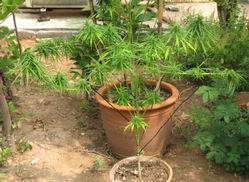
(Strawberry Thai)
(JLP MississippiMud Male)
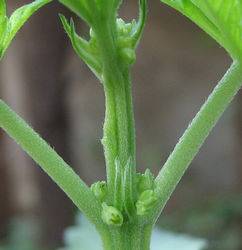
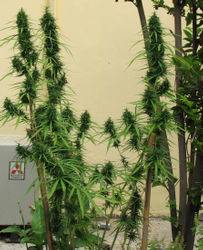

This viney plant has started to smell like Strawberries. It is a very smooth and faint smell, but definitely strawberry!
Some of these smaller buds on both plants will be getting hit with pollen from my 2 newfound JLP MM males. About how long after pollination will the seeds be mature?

(Strawberry Thai)
(JLP MississippiMud Male)


Last edited:
It looks to me like it's regenerating - are those leaves from the plant with the fat buds? If so, I might be tempted to get those off, as they will start to 'run' and get leafy again. Equatorial plants will readily re-veg.
This is a short extract from Ed Rosenthal's classic Marijuana Grower's Handbook, from the 'Advanced Flowering' chapter:
This is a short extract from Ed Rosenthal's classic Marijuana Grower's Handbook, from the 'Advanced Flowering' chapter:
The plant has developed many variations on the photoperiod response to adjust to different climactic and latitudinal conditions. Female plants from equatorial or sub-equatorial zones such as Colombia, southern Mexico, central Africa, and south India are absolute photo-determinate (APD).
These plants are acclimated to latitudes in which there is little variation in the light cycle throughout the year. As long as the dark period falls below a minimum trigger period, the plant remains in the vegetative growth cycle. This can go on for years under continuous light conditions. When the dark period lengthens to a trigger point, the plant changes its growth pattern to sexual development. If the dark period falls below the trigger level when the plants are flowering, the plants easily revert back to vegetative growth. APD plants are good candidates to flower and regenerate.
Since they respond to the light cycle in a relatively simple way, irregular or interrupted cycles alter growth significantly. Buds are smaller, leafier, fluffier, looser, and may run. They look a bit like low-light flowers. Flower size can be increased by allowing the plants to ripen fully, then placing them in a continuous light regimen for a few days. Flowering is triggered again and the plants produce new clusters of flowers.
ThaiPhoon
Active member
Hi Elevator Man, thanks for the good info. I think that it is "running". You can kinda see what I think you mean by that, at the very tops of those top buds. There are tiny shoots with stretched calyxes and those non-serrated leaves...I took one of the tops down today.
At least now I know that I can't flower here all year round! DOH!

At least now I know that I can't flower here all year round! DOH!

Last edited:
G
Guest
"At least now I know that I can't flower here all year round! DOH!"
Lucky, I need to move somewhere its summer all the time hehe
Nice macro Too!
Lucky, I need to move somewhere its summer all the time hehe
Nice macro Too!
ThaiPhoon - I've been trying like damn to find the graph from Marijuana Botany on photoperiods - I know there's one on the site somewhere. It's perfect, as it will tell you the longest/shortest days and perfect flower periods for any latitude, anywhere, and also when the peak THC production is - ie when to harvest!
I think pretty much like Hawaii and equatorial zones, you'll have two main flower periods per year, and one really short one if the weather's OK.
I think pretty much like Hawaii and equatorial zones, you'll have two main flower periods per year, and one really short one if the weather's OK.
ThaiPhoon
Active member
Hey Pipeline, THANKS for that chart! I am very eager for my next round here now! I will be giving the chop to the big tops on those Thai plants. I think I will just let it reveg and do its thing outside, more as a learning experiment than anything.
Any thoughts as to what may happen when I dust them with pollen? I hope those MM will give some within 2 weeks. The Thai plant is starting to run. But the runs are basically stretched calyxes and still have the white hairs....so in theory it is still waiting for some pollen, right? Even though it is going into reveg as long as it is still producing and has white hair it will create seeds when pollenated?
Thanks for the feedback and comments everyone!
PEACE
Any thoughts as to what may happen when I dust them with pollen? I hope those MM will give some within 2 weeks. The Thai plant is starting to run. But the runs are basically stretched calyxes and still have the white hairs....so in theory it is still waiting for some pollen, right? Even though it is going into reveg as long as it is still producing and has white hair it will create seeds when pollenated?
Thanks for the feedback and comments everyone!
PEACE
YES! That's the one! Thanks pipeline - much appreciated.
M
macassa420
Was Thai easy to grow?
ThaiPhoon
Active member
Yes, it was very easy to grow...I just put the seed in the dirt and gave the plants water and nutrients every so often. I topped them a few times as well. I just wish they could have flowered longer.
I cut all but the very bottom branches off! They are obviously re-vegging. I did this a few days ago and let them dry out in front of a circulating fan. They dried very fast because the buds were so airy.
The smoke tastes GREAT! The high is really heady...make my head feel bigger. Also since it was taken SO early the high is short lived. about an hour or so...But thats ok because I love the taste and the smoke!
I am waiting for some pollen out of the JLP Mississippi Mud to pollenate the remaining strawberry thai plant and the leftovers of the two I have chopped.
The strawberry smelling Thai seems to have stopped flowering as well and is starting to run. She will be getting pollen and hopefully producing a LOT of seeds.
PEACE
I cut all but the very bottom branches off! They are obviously re-vegging. I did this a few days ago and let them dry out in front of a circulating fan. They dried very fast because the buds were so airy.
The smoke tastes GREAT! The high is really heady...make my head feel bigger. Also since it was taken SO early the high is short lived. about an hour or so...But thats ok because I love the taste and the smoke!
I am waiting for some pollen out of the JLP Mississippi Mud to pollenate the remaining strawberry thai plant and the leftovers of the two I have chopped.
The strawberry smelling Thai seems to have stopped flowering as well and is starting to run. She will be getting pollen and hopefully producing a LOT of seeds.
PEACE
HarryNugz
Active member
Very sexy Thai girls you have there! Thank you for providing a great thread to follow along and for the pics too. I've always wanted to see the skinny Sativa leaves of a pure Thai. Keep safe over there with random piss tests from clubs I think I'd steer clear of em. I wonder how possible it would be to be legal in your state then go visit Thailand and not smoke anything at all but get nabbed for a random and come up positive. I think I'll clear my system before going as I wanna hit up some club scenes when I go.
Anyways, great thread and pics!!!
Anyways, great thread and pics!!!


